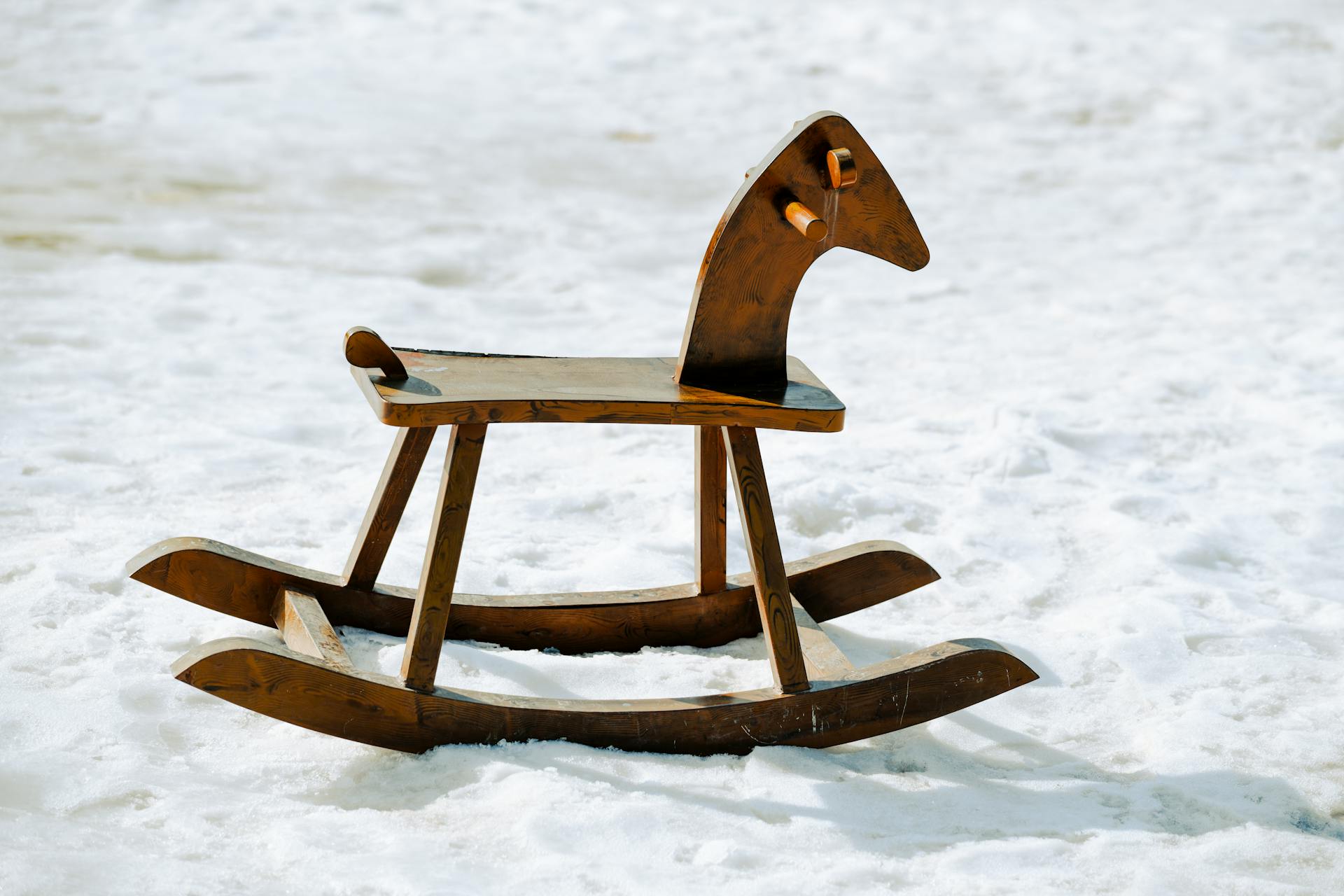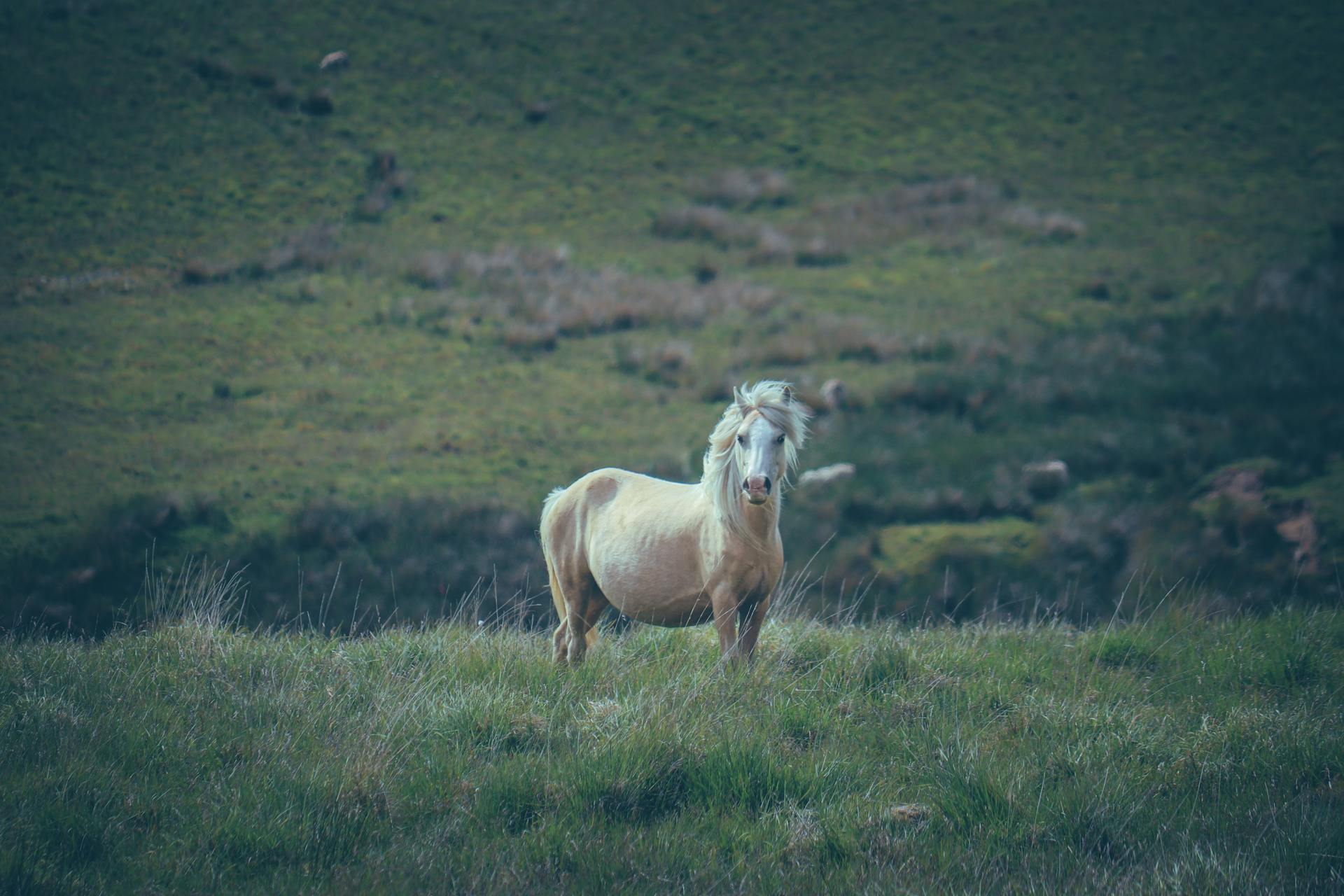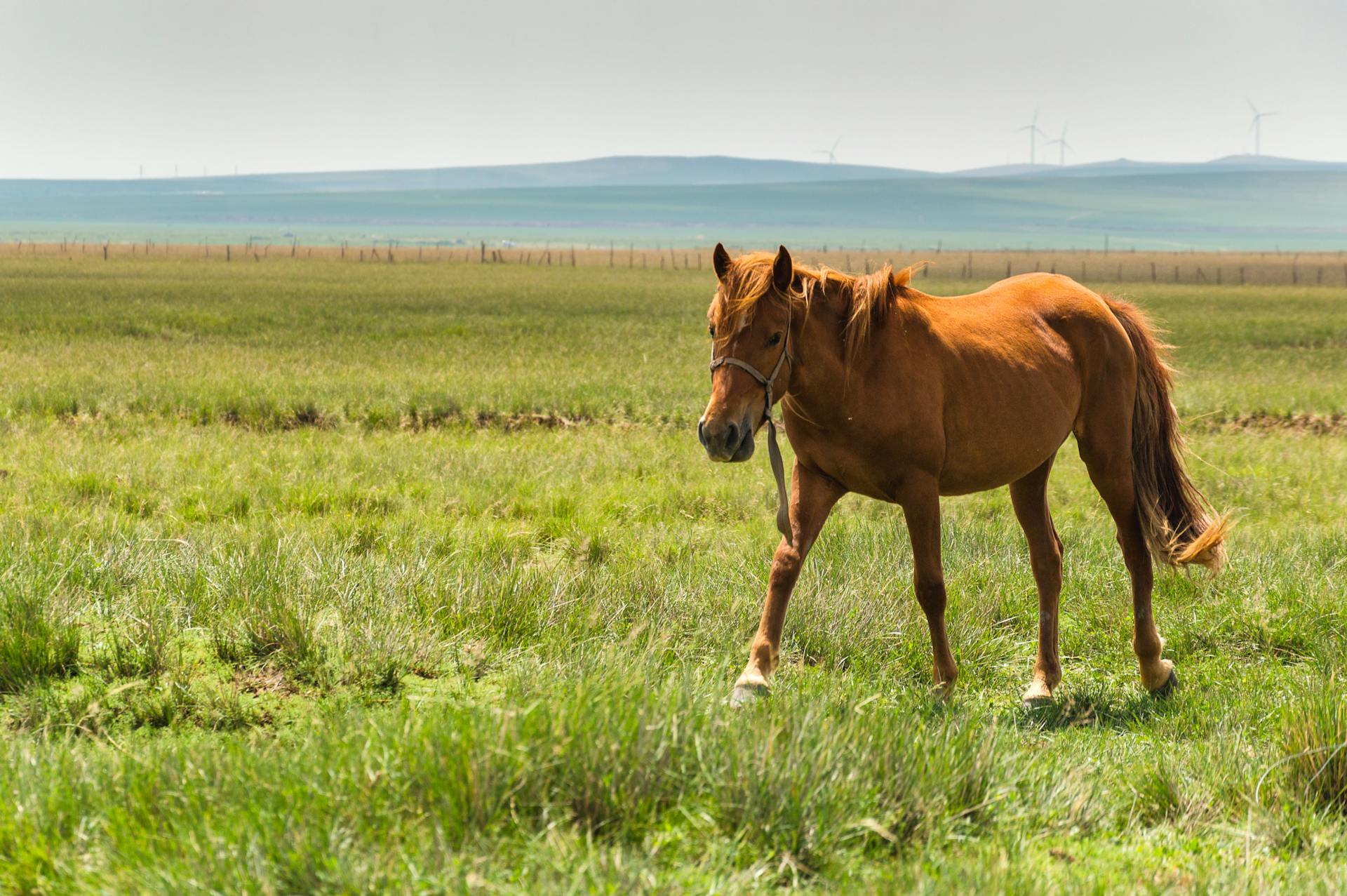
One of the most versatile movements a horse can perform is the sidepass. A horse can sidepass in any direction - to the left, to the right, or even diagonally. The sidepass is often used as a maneuvering tool, to position a horse for mounting, or to help a horse negotiate obstacles. It can also be used as a training exercise to develop a horse's coordination and balance.
To teach a horse to sidepass, start by asking him to walk or trot in a straight line. When he is walking or trotting gently and evenly, slow him down and ask him to step to the side. You can cue him by lightly tapping your crop or whip on the opposite side of the saddle from the direction you want him to go. As he steps to the side, follow his movement with your body, keeping your weight centered over his center of gravity. When he reaches the position you want him to hold, praise him and offer him a treat.
Repeat this exercise, moving a little further to the side each time. As he becomes more comfortable with the movement, you can ask him to sidepass over ground poles or other small obstacles. Once he is confident with the movement, you can add turns, circles, and figure eights to the exercise. This will help develop his coordination and balance, and will make the sidepass even more versatile.
Here's an interesting read: How Much Exercise Does My Dog Need Calculator?
What is a sidepass?
A sidepass is a method of horse training in which the horse is caused to move sideways, usually around the handler. The handler stands at the horse's shoulder and uses body language and/or verbal cues to ask the horse to move its hips over, away from the handler.
The purpose of the sidepass is to teach the horse to yield its haunches and shoulders independently, and to develop its balance and collection. The sidepass can also be used as a maneuvre to position the horse's body in order to mount, dismount, or execute other movements.
When learning to sidepass, the horse is first taught to yield its haunches away from the handler's pressure. The handler stands at the horse's shoulder, facing the direction the horse is to move, and uses their body to block the horse's forward movement. The handler then uses their arm and/or voice to indicate that the horse should step its haunches over sideways. The horse should learn to respond to the lightest pressure from the handler, and should not require strong signals.
Once the horse understands how to yield its haunches, the handler progresses to asking the horse to sidepass while also yielding its shoulders. This is more difficult for the horse, as it requires the horse to move its weight onto its inside hind leg and shift its balance. The handler must be careful not to ask for too much too soon, as this can cause the horse to become unbalanced and fall.
With practice, the horse will learn to sidepass smoothly and with little effort. The sidepass can be used to position the horse's body for mounting, dismounting, or other movements, and can also be used as an exercise to develop the horse's balance and collection.
Take a look at this: Body Warm
Why would you want to teach a horse to sidepass?
There are many reasons why you might want to teach your horse to sidepass. For one, it can be a very useful tool for maneuvering around obstacles and tight spaces. It can also help your horse to better understand your cues and to develop a more responsive and obedient relationship with you. Additionally, teaching your horse to sidepass can help to improve his or her balance and coordination, and can also provide a good workout. Finally, many people simply enjoy the challenge of teaching their horse new tricks, and sidepassing can certainly be impressively when executed correctly!
A unique perspective: Dog Agility Courses for Beginners
What are the benefits of teaching a horse to sidepass?
When it comes to training a horse, there are many different techniques that can be used to achieve desired results. One such technique is known as sidepassing, which can be used to teach a horse to move sideways. While this may not seem like a particularly useful skill, it can actually be quite beneficial in a number of different ways.
For starters, sidepassing can be used as a way to turn a horse while keeping its head and body facing forward. This can be useful when maneuvering a horse through tight spaces, such as when going through a gate or doorway. Additionally, sidepassing can also be used to help a horse back up in a straight line.
Another benefit of teaching a horse to sidepass is that it can help to build trust between the horse and rider. This is because the horse must trust the rider enough to allow them to guide it sideways, which can be a little bit daunting at first. However, once the horse learns that it can trust the rider, it will be more willing to try new things and follow directions.
Lastly, sidepassing can also be used as a way to help a horse calm down. This is because the horse must focus on following the rider's directions in order to execute the sidepass, which can help to distract it from any outside stimuli that may be causing it to feel agitated or nervous.
Overall, there are a number of benefits that can be gained from teaching a horse to sidepass. This maneuver can be used to help with turning, backing up, and building trust, as well as to provide a way to help a horse calm down.
Take a look at this: Maximum Number
How do you start teaching a horse to sidepass?
When starting to teach a horse to sidepass, the first thing you need to do is get them used to moving their hips over. To do this, you'll need to start by longeing them in a circle, then moving out to an oval or figure eight shape. As you do this, you'll need to keep your inside rein short and your outside rein long, while also using your body and legs to cue the horse to move their hip over.
Once the horse is responding to the cues and moving their hips over, you can start to add in the sidepass. To do this, you'll need to move your outside rein back and your inside rein forward, while also using your body and legs to cue the horse to step their outside leg over. As you do this, you'll need to make sure that you're still maintaining a consistent, even pace.
It's important to note that when first teaching a horse to sidepass, it's important to go slowly and not ask for too much too soon. You'll also want to make sure that you're praise and Reward the horse for their efforts, as this will help to encourage them to keep trying. With patience and practice, your horse will eventually get the hang of it and be able to sidepass with ease!
Related reading: What Kind of Dog Is Cannoli on B Positive?
What are some things you need to keep in mind while teaching a horse to sidepass?
When you are teaching your horse to sidepass, there are a few things you need to keep in mind in order to ensure a successful result. First and foremost, you need to maintain a consistent and even pressure on the reins in order to cue your horse correctly. If you release the pressure even for a moment, your horse may think that you are finished cueing and could break the sidepass. Additionally, you need to be sure to keep your horse's shoulders straight throughout the entire movement - if his shoulders start to drift out, the sidepass will break down. Finally, you need to have a clear goal in mind for where you want your horse to go - if you are not specific with your cues, your horse may not understand what you are asking of him.
You might like: Pressure Cook Rabbit
What are some common mistakes people make while teaching a horse to sidepass?
One of the most common mistakes people make while teaching a horse to sidepass is not being consistent with their cues. When you first start asking your horse to sidepass, you need to be very clear with your cues and be consistent with how you ask for the move. If you start asking for a sidepass with your left rein and then switch to your right rein, your horse will get confused and will not understand what you are asking. Another common mistake is not having enough patience. It takes time and patience to teach a horse to sidepass and if you get frustrated or lose your patience, it will only make the process harder for both you and your horse. Finally, another common mistake is not rewarding your horse for doing the move correctly. Be sure to praise and reward your horse when they do the sidepass correctly so that they know they are doing what you want them to do.
Readers also liked: Neck Rein
How do you troubleshoot problems that come up while teaching a horse to sidepass?
There are many factors to consider when troubleshooting problems that come up while teaching a horse to sidepass. The first thing to consider is what the horse is doing wrong. There are a few common errors that horses make when learning to sidepass. One common error is that the horse will try to turn his head in the direction he is supposed to be moving. This can be corrected by using a stronger rein cue. Another common error is that the horse will try to walk forward instead of sideways. This can be corrected by using a stronger leg cue.
If the horse is making one of these common errors, the first step is to correct it. If the horse is still having trouble after correcting the common errors, there are a few other things to consider. One thing to look at is the horse's foot placement. The horse should have his inside front leg placed slightly behind the outside front leg. This will help him balance and move sideways. Another thing to consider is the horse's weight distribution. The horse should be carrying more weight on his inside hind leg than his outside hind leg. This will help him move sideways.
If the horse is still having trouble after considering these factors, it is important to consult with a trainer or veterinarian. They will be able to help you troubleshoot the problem and find a solution.
Intriguing read: Clear Cat Forklift Error Codes
What are some advanced sidepassing maneuvers?
There are a number of advanced sidepassing maneuvers that can be used when riding a horse. These include the following:
1. The Half-Pass: This is a move where the horse moves sideways and diagonally at the same time. It is often used to change directions or to work on a particular exercise.
2. The Volte: This is a much tighter turn than the half-pass and is often used in dressage.
3. The Piaffe: This is a move where the horse trots in place, and is often used in dressage as well.
4. The Flying Change: This is a move where the horse changes leads in mid-air. It is often used in dressage and show jumping.
5. The Spanish Walk: This is a move where the horse lifts its front legs high in the air and walks on its hind legs. It is often used in dressage and is considered to be very impressive.
All of these maneuvers require a great deal of practice and training in order to be executed correctly.
Additional reading: Dressage Horse
How can you use sidepassing in your everyday riding?
There are many ways that you can use sidepassing in your everyday riding. One way is to use it to get your horse to move over when you need to mount or dismount from your horse. Another way is to use it to get your horse to move out of the way when you are leading another horse. You can also use it to get your horse to move out of the way when you are riding in a group. Finally, you can use it to get your horse to move over when you are crossing a bridge or going through a narrow space.
Frequently Asked Questions
How to side pass a horse for beginners?
To side pass a horse for beginners, take a deep breath and resin your spine. Gently place one hand on the horse's neck and use the other hand to guide its head. With your feet hip-width apart, gently push off from the ground with your heels and pass the horse to the right.
What is a moving side pass in riding?
A moving side pass is when a rider uses their horse's movement to help cue them through a skill, such as schooling or jumping. When the horse starts to move in a particular direction (e.g., to the left), the rider should bump their horse's side at the same time. The horse will then respond by moving in that direction, thus performing thesidepass.
How to train a horse to move sideways?
To train your horse to move sideways, start byasking it tomove its hindquarters by stepping one back foot in front of the other. Next, ask it tomove its forehand by stepping one front foot in front of the other. Finally, use a fence as guidance todemonstrate how both ends should be moved.
How do you side pass to the left?
To side pass to the left, lift your left leg to release pressure and lift the left reign up and out slightly to open movement towards the left. You will apply pressure on your right side. [3] To side pass to the right, reverse these cues so the right side of your body is open and you apply pressure on your left side.
How to teach a side pass on a horse?
Move your horse so that they are facing a fence or wall. This will allow them only movement to the side or in reverse.
Sources
- https://www.youtube.com/watch
- https://www.wikihow.com/Teach-Your-Horse-to-Side-Pass
- https://equinewellnessmagazine.com/teaching-horse-side-pass/
- https://equinehelper.com/horse-move-sideways/
- http://www.meaningslike.com/name-stands-for/sidepass
- https://www.youtube.com/watch
- https://www.youtube.com/watch
- https://horseandrider.com/western-horse-training-tips/horse-training-the-sidepass/
- https://app.jackslearningcircle.com/posts/beginning-stages-of-the-side-pass
- https://www.horseillustrated.com/western-horse-training-training-the-sidepass
- https://horseandrider.com/horseback-trail-riding/teach-sidepass/
- https://er2win.com/articles/what-is-a-sidepass
- https://www.youtube.com/watch
- https://en.mimi.hu/horse/side_pass.html
- https://www.bio-key.com/fingerprint-scanners/sidepass/
Featured Images: pexels.com


